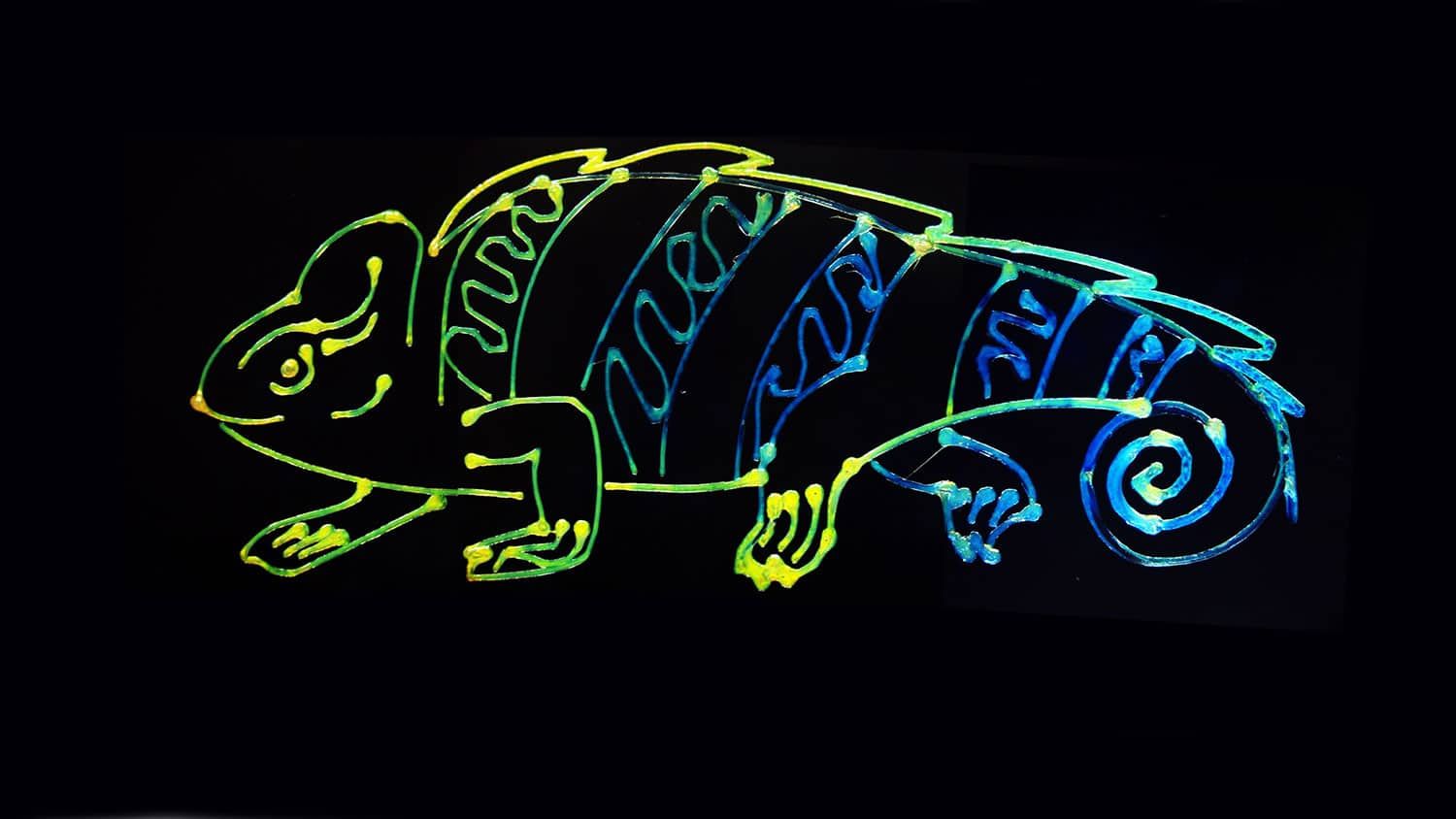This technology, inspired by chameleons, enables multicolor printing using just one ink
Published by Cédric,
Article author: Cédric DEPOND
Source: Proceedings of the National Academy of Sciences
Other Languages: FR, DE, ES, PT
Article author: Cédric DEPOND
Source: Proceedings of the National Academy of Sciences
Other Languages: FR, DE, ES, PT
Follow us on Google News (click on ☆)

Inspired by the color-changing capabilities of chameleons, the researchers developed a dynamic and durable color-changing ink, visible in this 3D printed chameleon illustration created by the research team.
Credit: Sanghyun Jeon, Diao Lab
The study, led by Ying Diao, an associate professor of chemistry and chemical and biomolecular engineering at the University of Illinois Urbana-Champaign, was published in the prestigious Proceedings of the National Academy of Sciences journal. The technique developed by the research team is based on precisely adjusting the UV light during the printing process. By modulating this irradiation, the researchers succeeded in achieving a broad palette of colors, ranging from deep blue to orange, without the need for multiple types of inks. This innovative approach thereby allows the creation of color gradients in real time, a technological feat previously unseen in the field of 3D printing.
The colors obtained through this technique are said to be "structural" because they originate from nanostructures present on the surface of the printed objects, which interact with visible light. This feature gives the colors a vibrance and durability that surpasses that of traditional chemical pigments.
Moreover, this method offers great versatility by allowing the creation of patterns and complex details, as evidenced by the reproduction of artistic works such as Vincent Van Gogh's "Starry Night", carried out by the research team to demonstrate the capabilities of this technique.
The study also highlights the importance of interdisciplinary collaboration in the development of this innovation. By combining their expertise in chemistry, engineering, and materials, the researchers were able to design a system capable of producing fascinating properties at the molecular level.
This technological breakthrough paves the way for numerous potential applications. It could also contribute to the creation of new types of sensors or biomedical applications, thus offering promising prospects for the future of 3D printing.